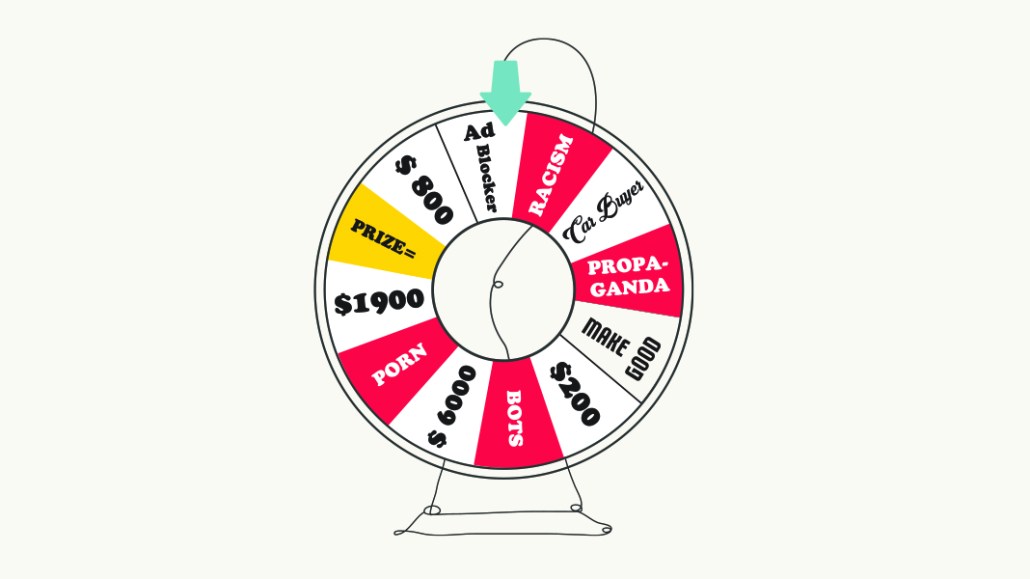As YouTube adopts new standards, the transition from brand safety to suitability is accelerating

Marketers are notoriously wary over where their ads appear online. But the ongoing pandemic and societal upheaval have brought those issues into sharp focus.
At the same time, those same marketers are increasingly expected to take a stand on potentially brand-busting landmines like politics and civil unrest. Being a progressive safety first marketer shouldn’t be an oxymoron in the current climate — but it is.
While there’s an abundance of automated ways to keep ads away from incredibly unsafe content, it’s harder for advertisers to identify content at the margins of their standard brand-safety strategies. Each advertiser’s threshold for the content they want their ads near vary, which has made it harder for platforms and their ad verification partners to create the controls to do that. These days it’s far easier for an advertiser to be overly restrictive in their attempts to avoid inappropriate content, media owners be damned.
This is especially true for online video where the lack of text makes it harder to ascertain the riskiness of the content. YouTube, however, is currently working on a fix aligned with standards defined by the Global Alliance of Responsible Media.
Essentially, it means advertisers will have a common set of definitions, or a baseline, of what is suitable for their ads across 11 categories, including terrorism, debated sensitive social issues and arms & ammunition.
Zefr’s technology, which will use a mix of machine learning and human moderators, will let advertisers effectively measure the suitability of the content their ads appear against based on low, medium and high thresholds. A low-risk video in the ‘Adult & Explicit Sexual Content’ category may be a sexual education video an advertiser deems suitable whereas those in the media and high-risk thresholds could feature content that isn’t even shown on TV. From there, advertisers can apply their own additional restrictions if needed.
“Standardization will mean that sellers get tools to check suitability, and can tweak content so that it monetizes. This will likely lead to a regression of quality to minimum acceptability, as happened with other hygienic metrics like viewability” said Marc Guldimann, CEO of ad tech firm Adelaide.
There’s an expectation that other platforms as well as those media owners in the open web will follow YouTube in adopting the same GARM standards. While no plans have been announced, the platforms have made commitments in recent weeks to support the cross-industry collaborative that launched last January.
“We’re looking to drive adoption of the framework across the open web, not just the platforms, so we’re working with the leading verification providers to be able to measure the framework for programmatic, direct deals and other forms of buying,” said Joe Barone, managing partner of brand safety across the Americas region for GroupM.
For advertisers, standardization of brand suitability could make it easier to be less conservative when it comes to what content they block. Often those blocklists don’t lead to the outcome advertisers all want — as evidenced by the amount of content that was blocked at the onset of the coronavirus crisis that inadvertently raised the cost of media by artificially constraining inventory.
“The problem our clients have with brand suitability, which is all about using extra signals like contextual targeting to extend the reach of your ads, and the more conservative brand safety notion, is they’re both at fundamentally at odds with one another,” said Tom Grant, svp of programmatic and operations at Havas Media. “One of the biggest challenges our clients have is understanding where they’re able to loosen brand safety guidelines and trusting the technology to go to work.”
Some advertisers have gone as far as asking ad tech businesses for brand suitability guarantees for video buying. In other words, they have wanted to only pay for those impressions that meet their suitability standards. But it’s hard for those players to guarantee impressions they can’t measure, which is why the upcoming standards on YouTube could be the first step toward advertisers being able to trade on suitability as a metric, similar to what they do when they track the cost for viewable thousand impressions.
“We’ve already had some discussions around ideas that could potentially lead to potentially trading on brand suitability,” said Harrison Boys, media standards director at Magna Global. “In some ways, some of the clients we work with are already thinking more about the nuance that comes with the content they buy as they’re using a quality CPM to identify areas that are viewable, fraud-free and brand safe for their ads.”
More in Marketing

Agencies create specialist units to help marketers’ solve for AI search gatekeepers
Wpromote, Kepler and Jellyfish practices aim to illuminate impact of black box LLMs’ understanding of brands search and social efforts.

What AI startup Cluely gets — and ad tech forgets — about attention
Cluely launched a narrative before it launched a tool. And somehow, it’s working.

Ad Tech Briefing: Start-ups are now table stakes for the future of ad tech
Scaled ad tech companies need to maintain relationships with startups, when the sector is experiencing ongoing disruption due to AI.





